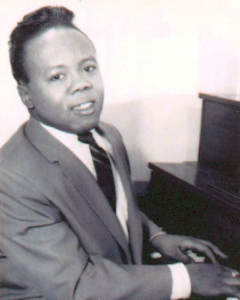He was born Frederick Earl Long in 1940, but given the fact that he rose to just a little bit over five feet tall, the “Shorty” moniker seemed to fit perfectly. Although he got his musical education from legends like Alvin “Shine” Robinson and W.C. Handy, Long was a natural. He could play piano, organ, drums, guitar, trumpet, and harmonica, and was a pretty good hand clapper to boot.
When he was 19 years old, Long moved to Detroit. It was there that he caught the attention of another legend, Harvey Fuqua, who signed Long to his Tri-Phi label. In 1962, Long’s first single for the label was “I’ll Be Here” b/w “Bad Willie.” It could be said that it was forgotten, if only it had been noticed in the first place. The next single was released later in that same year, but “Too Smart” didn’t do any better. By then Fuqua had grown tired of the trials of running a label and he sold out to Berry Gordy, Jr. That’s how Shorty Long became a Motown artist and began to record for the label’s Soul Records imprint.
Long’s first release for Motown was “Devil With a Blue Dress On.” If you’re only familiar with the Mitch Ryder cover, Long’s original is a revelation, done in a slow, grinding fashion and featuring some wicked guitar playing. Despite being a great single, “Devil” didn’t chart for Long, but hopefully he made some money when Ryder had a hit version of the song that Long had written with William Stevenson.
“It’s a Crying Shame” was Long’s next single, and again, nothing. Things changed, well, should have changed with Long’s next release. “Function at the Junction” was a song that Long wrote with Eddie Holland. It had all the ingredients of a hit — it was funky, it had great lyrics, and passionate singing, and you could dance to it. Why it stalled at #97 on the Billboard Hot 100 in 1966 remains a mystery. The followup was “Chantilly Lace,” another great single that got some airplay but failed to get any chart action. The weird thing is that the next single, “Night ‘Fo Last,” a record decidedly inferior to “Function,” made it to #75 on the pop chart, much further than “Function” ever got. Go figure.
In 1968 Long finally, finally had a hit with “Here Comes the Judge.” It was a phrase that had been coined by Pigmeat Markam, and popularized more recently by Flip Wilson. Long was able to build on that popularity with another funky classic. This time he took the record all the way to #8 on the charts. Long finally began to get the recognition he deserved, and it seemed that stardom was within reach. Motown gave him the go-ahead to produce his own records. The only artist who had that freedom at the label at that time was Smokey Robinson. Sadly, fate would intervene. On June 29, 1969, there was a boating accident on the Detroit River. Long and his friend Oscar Williams were killed.
The great Motown session pianist Earl Van Dyke liked to tell stories about Long. According to Van Dyke, Long would come into the studio and say “”Today we ain’t playing nuthin’ but funk, if you don’t feel funky, take a drink of this,” at which point he’d reach into his coat pocket and draw out a bottle of liquor.






Comments